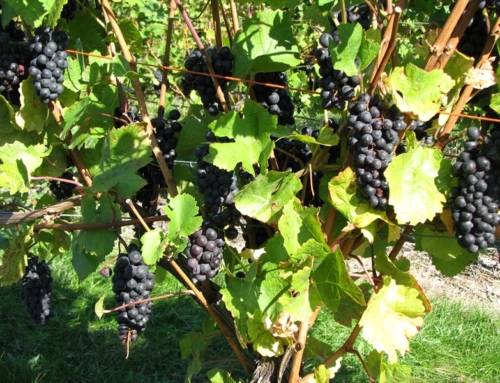For some of us, winetasting can be a bit intimidating. Knowing common terms can help. Here are some of the most commonly-used words by oenophiles.
Acidity — the liveliness and crispness in wine that activates our salivary glands
Aging — holding wine in barrels, tanks, and bottles to advance them to a more desirable state
Astringent — tasting term noting the harsh, bitter, and drying sensations in the mouth caused by high levels of tannin
Balance — a term for when the elements of wine – acids, sugars, tannins, and alcohol – come together in a harmonious way
Blend — a wine made from more than one grape varietal
Body — a tactile sensation describing the weight and fullness of wine in the mouth. A wine can be light, medium, or full bodied.
Bouquet — a term that refers to the complex aromas in aged wines
Breathing — exposing wine to oxygen to improve its flavors
Brilliant — a tasting note for wines that appear sparkling clear
Complex — a wine exhibiting numerous odors, nuances, and flavors
Dry — a taste sensation often attributed to tannins and causing puckering sensations in the mouth; the opposite of sweet
Fermentation — the conversion of grape sugars to alcohol by yeast
Finish — the impression of textures and flavors lingering in the mouth after swallowing wine
Fruity — a tasting term for wines that exhibit strong smells and flavors of fresh fruit
Full-bodied — a wine high in alcohol and flavors, often described as “big”
Herbaceous — a tasting term denoting odors and flavors of fresh herbs
Length — the amount of time that flavors persist in the mouth after swallowing wine; a lingering sensation
Malolactic Fermentation — a secondary fermentation in which the tartness of malic acid in wine is changed into a smooth, lactic sensation. Wines described as “buttery” or “creamy” have gone through “malo”.
Mature — ready to drink
Mouth-feel — how a wine feels on the palate; it can be rough, smooth, velvety, or furry
Nose — a tasting term describing the aromas and bouquets of a wine
Oenology — the science of wine and winemaking
Oxidation — wine exposed to air that has undergone a chemical change
Sommelier — A wine butler; also used to denote a certified wine professional.
Spicy — a tasting term used for odors and flavors reminiscent of black pepper, bay leaf, curry powder, baking spices, oregano, rosemary, thyme, saffron or paprika found in certain wines
Structure — an ambiguous tasting term that implies harmony of fruit, alcohol, acidity, and tannins
Sweet — wines with perceptible sugar contents on the nose and in the mouth
Tannins — the phenolic compounds in wines that leave a bitter, dry, and puckery feeling in the mouth
Texture — a tasting term describing how wine feels on the palate
Vegetal — tasting term describing characteristics of fresh or cooked vegetables detected on the nose and in the flavors of the wine. Bell peppers, grass, and asparagus are common “vegetal” descriptors.
Vinification — the process of making wine
Vintage — the year a wine is bottled. Also, the yield of wine from a vineyard during a single season.
Weight — similar to “body”, the sensation when a wine feels thick or rich on the palate
Young — an immature wine that is usually bottled and sold within a year of its vintage. Wines meant to be drunk “young” are noted for their fresh and crisp flavors.



Leave A Comment
You must be logged in to post a comment.